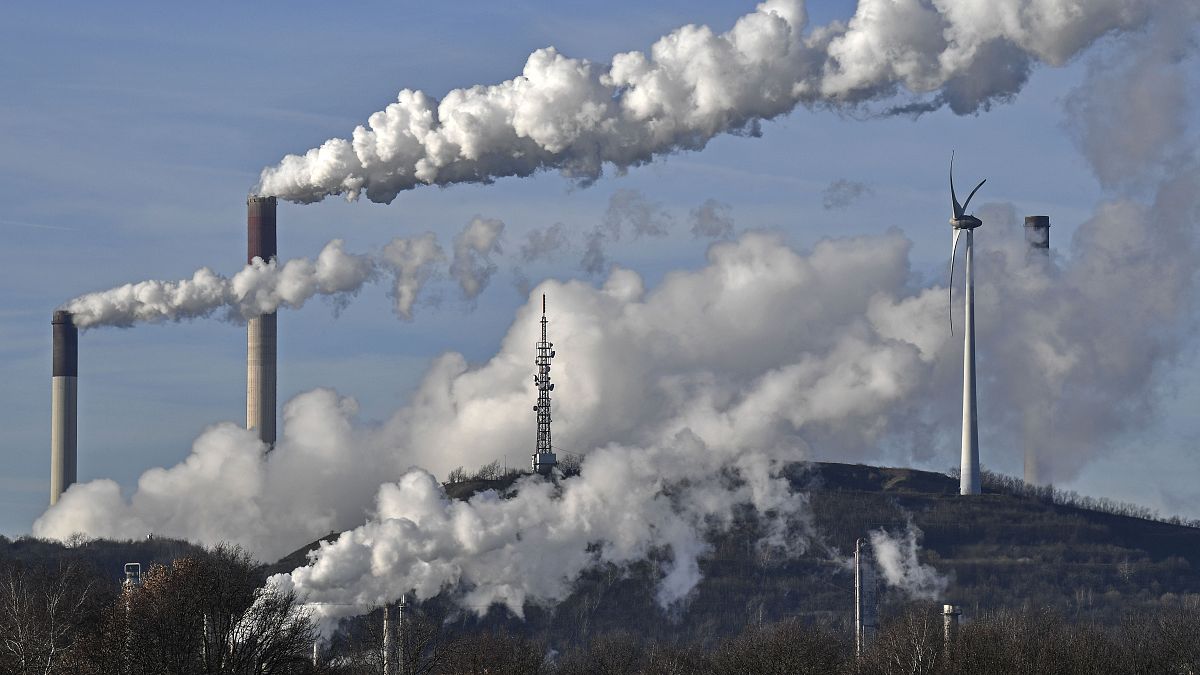The International Energy Agency says that CO2 emissions will likely fall by 7% in 2020 but now the world needs to create more sustainable energy solutions.
The COVID-19 pandemic has presented an opportunity to "reshape the future of energy", the International Energy Agency (IEA) has said in its annual outlook report
It comes after the pandemic caused more disturbance in the sector than any other prior event in recent history, it added.
The Paris-based agency laid out different scenarios for the world's energy demand over the coming decades and said that governments and investors need to make crucial energy decisions to address climate change.
The COVID-19 crisis has already fuelled a "huge shock to the system". The agency predicts that carbon emissions will drop by 7 per cent by the end of 2020 and global energy demand will decrease by an estimated 5 per cent in 2020.
"Despite a record drop in global emissions this year, the world is far from doing enough to put them into decisive decline.
"The economic downturn has temporarily suppressed emissions, but low economic growth is not a low-emissions strategy – it is a strategy that would only serve to further impoverish the world’s most vulnerable populations," said Dr Fatih Birol, the IEA's executive director.
"Only faster structural changes to the way we produce and consume energy can break the emissions trend for good."
In order to reach an ambitious goal to reduce net-zero carbon emissions by 2050, for instance, there would need to be "a set of dramatic additional actions over the next 10 years," the IEA said in the report. But if existing infrastructure remains, many climate goals will not be reached, the agency said.
"If today’s energy infrastructure continues to operate as it has in the past, it would lock in by itself a temperature rise of 1.65 °C," the report said.
Nonetheless, the COVID-19 pandemic already fuelled some changes, with renewables set to be the only energy source expected to grow in 2020, it added.
Solar becomes the 'new king of electricity'
Over the next ten years, solar energy will become the "new king of electricity" as solar projects are now some of the lowest cost energy projects available, the IEA outlook report states.
In one scenario for future energy projects, the IEA said that if COVID-19 is brought under control in 2021 and the economy returns to pre-crisis levels, renewables could still meet 80 per cent of the growth in global electricity demand by 2030.
"Hydropower remains the largest renewable source of electricity, but solar is the main driver of growth as it sets new records for deployment each year after 2022, followed by onshore and offshore wind," the IEA report predicts.
They highlighted however that the transformation of electricity to renewables could impact the supply due to the risk of outdated electrical grids.
Demand for coal will plummet but no 'rapid decline' for oil
The COVID-19 crisis has also acted as a catalyst for the decline of coal.
The energy agency said that coal demand will not likely go back to pre-crisis levels and that by 2040 it will represent below 20 per cent of the global energy mix.
The phasing out of coal, rise in renewable energy, and natural gas competition will contribute to the retirement of 13% of 2019's coal-fired capacity by 2025, the IEA says.
Demand for oil, in the meantime, will likely not see a rapid decline even as demand for it "flattens out in the 2030s."
"Changes in behaviour resulting from the pandemic cut both ways. The longer the disruption, the more some changes that eat into oil consumption become engrained, such as working from home or avoiding air travel," the IEA report says.
"However, not all the shifts in consumer behaviour disadvantage oil."
This means that additional policies would need to be taken to phase out oil. Meanwhile, natural gas fares better than other fossil fuels in their outlook with a 30% increase in demand in South and East Asia by 2040.
"The era of global oil demand growth will come to an end in the next decade," Dr Birol said in a statement.
"But without a large shift in government policies, there is no sign of a rapid decline. Based on today’s policy settings, a global economic rebound would soon push oil demand back to pre-crisis levels."
